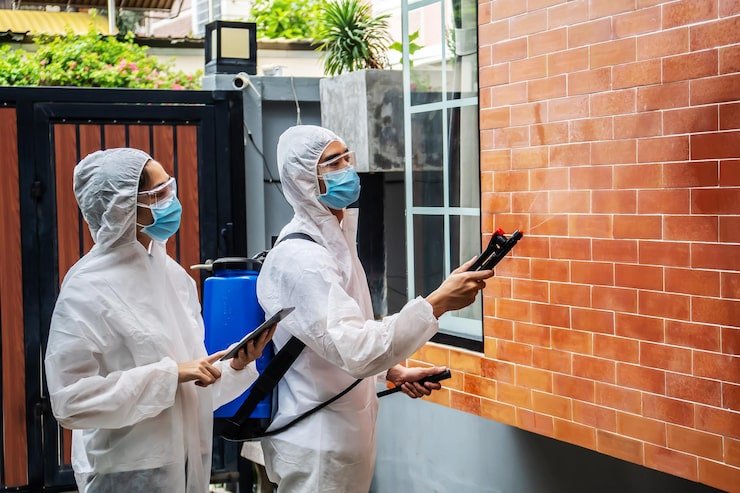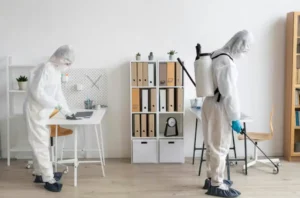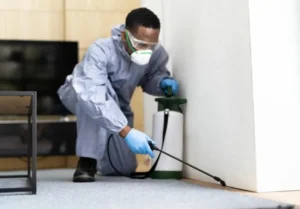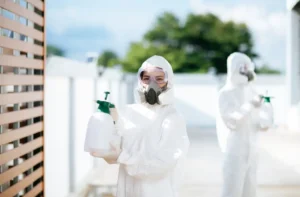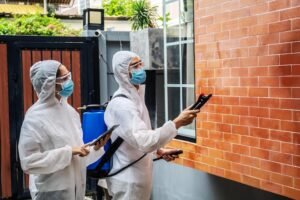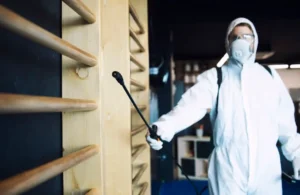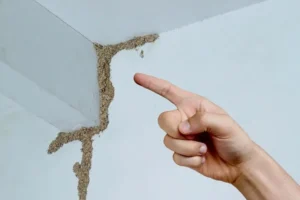Moisture control forms the foundation of effective termite prevention in Norfolk homes. Professional moisture inspections identify conditions that attract termite colonies and create environments where infestations can develop and thrive. Knowing the relationship between moisture and termite activity helps homeowners implement prevention strategies that protect their properties from costly damage.
The Moisture-Termite Connection
Subterranean termites require consistent moisture levels to survive and reproduce. These insects cannot tolerate dry conditions and actively seek environments with adequate humidity to support colony development. Norfolk’s coastal climate provides natural moisture sources, but structural moisture problems create even more attractive conditions for termite establishment.
Moisture-damaged wood becomes significantly more appealing to termite colonies than dry lumber. The softening effect of prolonged moisture exposure makes wood easier for termites to consume and digest. Areas with ongoing moisture problems often experience more rapid termite damage once infestations begin.
Sources of Structural Moisture
Plumbing leaks create localized moisture problems that can attract termite activity to specific areas of structures. Leaks behind walls, under floors, or in crawl spaces may go undetected for months while creating ideal conditions for termite colony establishment. Even small leaks can provide sufficient moisture to support termite activity.
Poor drainage around foundations allows water to accumulate near structural components. Clogged gutters, improper grading, and inadequate drainage systems can direct water toward foundation walls and crawl spaces. These conditions increase moisture levels in areas where termites typically gain access to structures.
Professional Moisture Detection Methods
Licensed inspectors use specialized equipment to identify moisture problems that may not be visible during routine property examinations. Moisture meters detect increased humidity levels in wood, drywall, and other building materials. These instruments can identify moisture problems behind finished surfaces where visual inspection is impossible.
Infrared cameras reveal temperature variations that indicate moisture issues or air movement patterns. These tools help inspectors locate hidden moisture problems and assess the extent of affected areas. Knowing how to interpret thermal imaging data requires specialized training and experience.
Detailed Assessment Techniques
Professional moisture inspections examine both obvious problem areas and locations where moisture issues commonly develop but may not be immediately apparent. Inspectors check around windows and doors, plumbing penetrations, and areas where different building materials meet. These transition areas often develop moisture problems due to settling, weather exposure, or installation issues.
Crawl space inspections focus on vapor barrier condition, ventilation adequacy, and signs of standing water or excessive humidity. These below-grade areas often experience moisture problems that create ideal conditions for termite activity. Proper moisture control in crawl spaces significantly reduces termite risk for entire structures.
Identifying High-Risk Moisture Areas
Bathroom and kitchen areas face increased moisture risk due to plumbing fixtures and appliances that produce humidity or may develop leaks. Professional inspections examine areas around tubs, showers, sinks, and appliances for signs of moisture intrusion or inadequate ventilation. These areas require ongoing attention to prevent moisture accumulation.
Basement areas often experience moisture problems due to groundwater intrusion, inadequate waterproofing, or poor ventilation. Moisture problems in basements can affect wood framing throughout structures and create conditions that attract termite colonies to foundation areas.
HVAC System Impacts
Heating and cooling systems can contribute to moisture problems if not properly maintained or if ductwork develops leaks. Condensation from air conditioning systems requires proper drainage to prevent water accumulation near structures. Inspectors examine HVAC components and installation details that might contribute to moisture issues.
Poor attic ventilation can trap moisture and create humidity problems that affect structural components. While termites typically do not infest attic areas directly, moisture problems in attics can affect overall structural moisture levels and contribute to conditions that favor termite activity in other areas.
Prevention Through Moisture Control
Addressing moisture problems before they attract termite activity provides the most cost-effective protection strategy. Professional moisture inspections identify specific issues that need attention and provide prioritized recommendations for addressing problems based on their possible impact on termite risk.
Structural modifications may be necessary to address ongoing moisture problems effectively. This might include improving drainage systems, upgrading ventilation, or installing moisture barriers in crawl spaces. These improvements provide long-term benefits beyond termite prevention.
Maintenance & Monitoring
Regular moisture monitoring helps ensure prevention efforts remain effective over time. Seasonal changes, aging building components, and weather events can affect moisture levels and create new problems that need attention. Ongoing monitoring allows for prompt response to developing issues.
Professional moisture inspections should be coordinated with termite inspections to provide detailed property protection. Knowing how moisture conditions change over time helps identify trends that might indicate developing problems before they become serious issues.
Treatment Integration
When moisture problems coincide with termite activity, addressing both issues simultaneously provides the most effective results. Moisture control eliminates conditions that support termite colonies while treatment applications target existing infestations. This combined approach reduces the likelihood of ongoing termite problems.
Some termite treatment methods work more effectively when moisture problems are addressed first. Reducing moisture levels can improve treatment penetration and effectiveness while eliminating conditions that might reduce treatment longevity.
Environmental Benefits
Moisture control improvements often provide energy efficiency benefits in addition to termite prevention advantages. Proper ventilation and moisture barriers can reduce heating and cooling costs while improving indoor air quality. These additional benefits help justify moisture control investments.
Addressing moisture problems can prevent other issues including mold growth, wood rot, and structural damage unrelated to termite activity. Moisture management provides multiple property protection benefits that extend beyond termite prevention.
Professional Service Selection
Effective moisture inspection requires specialized training and equipment that goes beyond general home inspection services. Look for providers with specific moisture detection experience and appropriate certification in moisture assessment techniques. Professional credentials indicate commitment to staying current with detection methods and safety requirements.
Moisture inspection services provide detailed written reports that document findings and include specific recommendations for addressing identified problems. These reports should include photographs of problem areas and clear explanations of how identified issues might affect termite risk and overall property condition.

